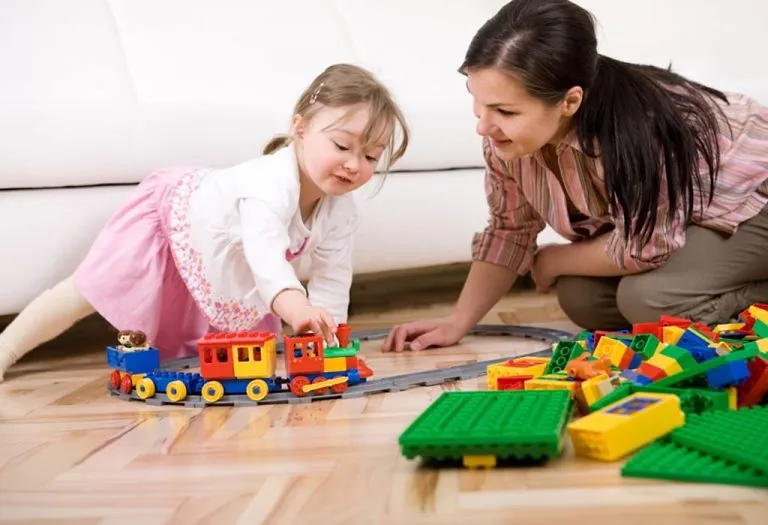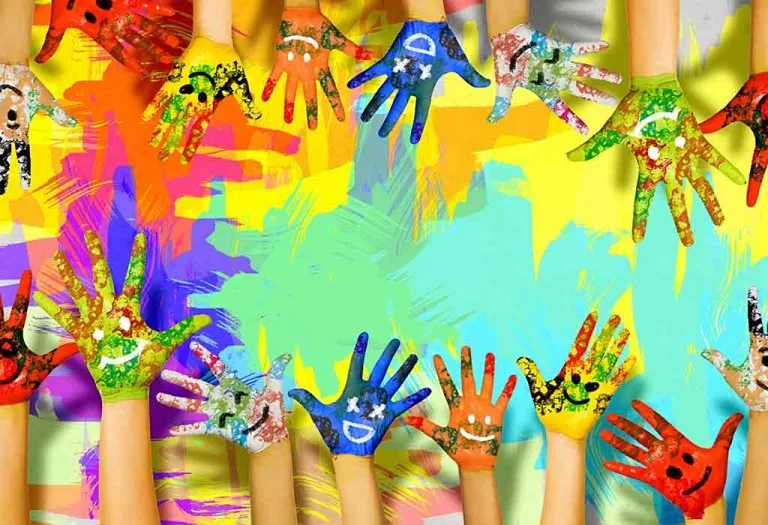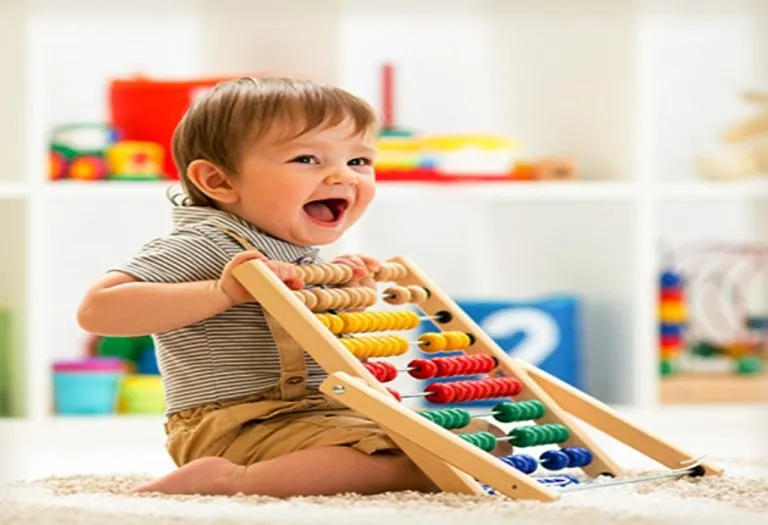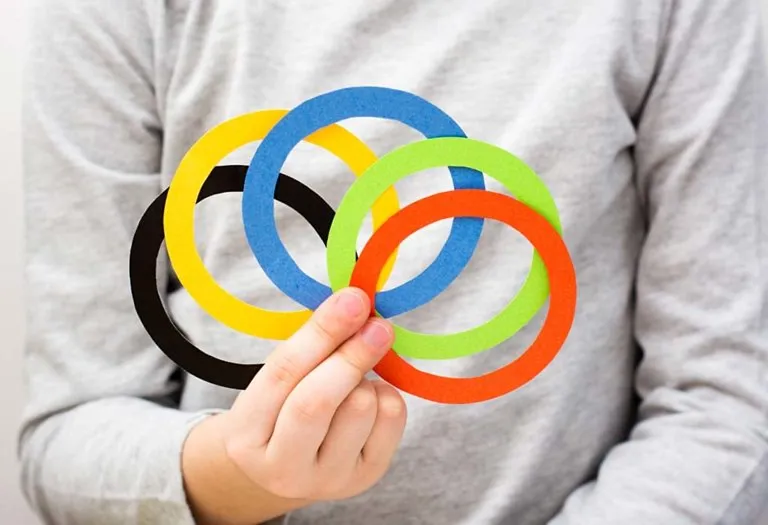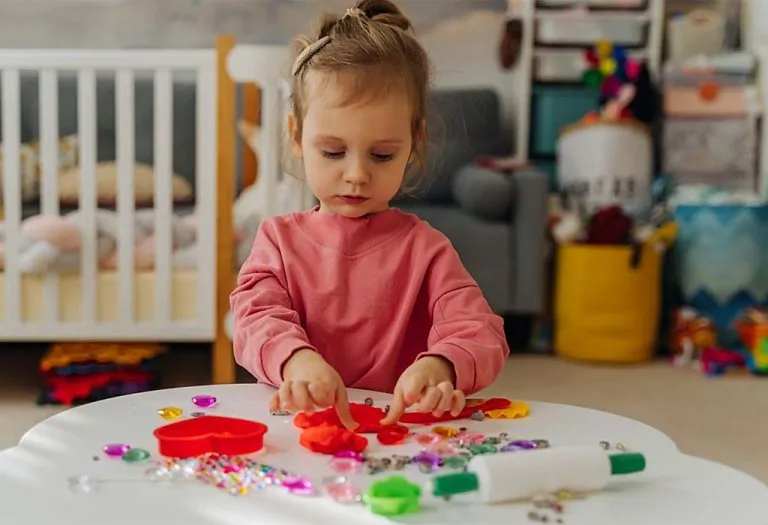20+ Innovative and Fun Brain Games for Kids
Getting your kids to realise the value of stimulating the mind is always an uphill task. Watching them get absorbed in controversial cartoons such as Doraemon may make you cringe, but what can you do? If you tell them to be productive, they simply protest in their adorable little voices, claiming that if they have no homework, why should they do extra work? Now, this is a reasonable request, and even the most authoritative moms would feel a tinge of pain. However, this doesn’t mean you resign yourself to having lost this battle or force them to do something they don’t want to do. The solution lies in getting your kids to stimulate their brains through fun activities in the form of brain games for kids.
Importance of Brain Games for Kids
Brain games help stimulate the brain and make your child think in unconventional ways to solve a problem. Just like physical exercise, the brain needs its own form of stimulation to improve upon areas like analytical thinking, creativity and problem-solving. The best part is that kids are likely to be open to the idea of a game as compared to, say, reading books.
Benefits of Brain Games for Children
Brain games offer a fun and engaging way to enhance a child’s cognitive abilities. These activities can significantly improve memory, problem-solving skills, and overall brain development.
1. Enhances Memory Retention
Brain games like puzzles and memory cards improve short-term and long-term memory by encouraging children to remember patterns and sequences. When children regularly engage in activities that require them to recall information, their memory becomes sharper, making it easier for them to retain new knowledge in everyday situations.
2. Improves Problem-Solving Skills
Games that require logical thinking and strategizing, such as Sudoku or mazes, help develop problem-solving skills as children work to find solutions. These games challenge kids to think critically, analyze situations, and devise strategies, which are essential skills for academic success and real-life challenges.
3. Boosts Concentration and Focus
Children need to pay attention to details in games like matching cards or building blocks, which can improve their concentration over time. This heightened focus not only aids in gameplay but also translates to better attention in school and other activities, fostering a more engaged learning experience.
4. Encourages Creativity
Games like Tangrams and jigsaw puzzles inspire children to think creatively as they attempt to form shapes and complete patterns. This process allows kids to explore different ways of thinking and problem-solving, helping them develop innovative ideas and approaches in other areas of their lives.
5. Develops Critical Thinking
Brain games challenge children to think critically and consider multiple perspectives or approaches to reach a solution. This skill is vital as it empowers children to analyze information, question assumptions, and make reasoned decisions, all of which are key components of effective learning.
6. Strengthens Hand-Eye Coordination
Activities that involve physical interaction, such as mazes or block stacking, improve hand-eye coordination as children align their actions with visual cues. This coordination is crucial for a variety of tasks, from writing and drawing to sports, promoting overall physical development.
7. Enhances Decision-making Skills
Children often need to make quick decisions during games, helping them develop better decision-making and judgment skills. This practice prepares them for real-world situations where they must assess options quickly and choose the best course of action.
8. Promotes Social Interaction
Some brain games, like board games, encourage social interaction, teaching children how to work in teams, share, and take turns. These experiences foster communication skills and empathy, making them better equipped for collaborative environments in the future.
9. Reduces Screen Time
Engaging in hands-on brain games can reduce excessive screen time, fostering healthier habits and better mental stimulation. By incorporating these games into their routines, children can develop a balanced approach to entertainment that prioritizes cognitive development over passive activities.
Challenging Brain Games for Children
Challenging brain games for children are not just entertaining; they play a crucial role in cognitive development and critical thinking. These games stimulate young minds, encouraging them to solve problems, think strategically, and enhance their memory skills.
Brain Development Activities
1. Memory
Age Group
4 years and above
What Will You Need
A set of memory cards with matching pairs
How to Play
- Spread the memory cards face down in a grid formation.
- Let your child turn over two cards at a time.
- If they match, the cards remain face up; if not, turn them back down.
- The objective is to match all pairs by remembering card positions.
2. Brain Fitness
Age Group
7 years and above
What Will You Need
Mobile or tablet with Brain Fitness app
How to Play
-
Open the Brain Fitness app on the device.
- Guide your child through various brain-stimulating exercises like logic puzzles and attention tasks.
- The app adjusts difficulty levels to match the child’s progress.
- Encourage regular play for overall brain development.
3. Simply Smarter Kids
Age Group
6 years and above
What Will You Need
Mobile or tablet with the Simply Smarter Kids app
How to Play
- Open the Simply Smarter Kids app and choose an activity.
- Your child must remember the sequence of audiovisual cues presented.
- Encourage them to replicate the sequence without errors.
- The game progresses as the sequences become more complex.
4. Lumosity
Age Group
8 years and above
What Will You Need
Mobile or tablet with the Lumosity app
How to Play
- Open the Lumosity app and select from a range of brain training tasks.
- Tasks may include memory challenges, problem-solving games, or attention exercises.
- Track your child’s progress and increase difficulty levels as they improve.
- Make it a regular habit to play to enhance cognitive skills.
5. Word Hunt
Age Group
5 years and above
What Will You Need
Flashcards with pictures and corresponding words
How to Play
- Lay out the picture flashcards in front of your child.
- Show them a word card and ask them to find the picture that relates to that word.
- They must correctly match the word with the associated picture.
- Continue until all the cards are matched, expanding vocabulary as they play.
6. New Languages
Age Group
5 years and above
What Will You Need
Language learning apps, songs, or videos in the target language
How to Play
- Engage your child in learning a new language by using apps or language lessons.
- Use flashcards, songs, or videos in the new language for daily exposure.
- Encourage them to repeat phrases and practice the language in everyday situations.
- Enhance learning by discussing the meanings of words and phrases in the language.
Brain Development Puzzles
1. Blue Block
Age Group
5 years and above
What Will You Need
Mobile or tablet with the Blue Block app installed
How to Play
- Open the game on the mobile or tablet.
- Explain that the goal is to free the Blue Dragon by rearranging the blocks.
- Your child must slide the blocks strategically to clear the path.
- The game teaches problem-solving through trial and error as they work through levels.
2. Colour Code, Master Mind, and Guess the Code
Age Group
6 years and above
What Will You Need
- Colour Code or Master Mind board game
- Guess the Code cards or app
How to Play
- Set up the game with the hidden code and hints.
- Explain to your child that they must guess the code based on the clues provided.
- Encourage them to use logical deduction to narrow down the options.
- The game continues until the correct code is guessed.
3. Board Games
Age Group
4 years and above
What Will You Need
Board games like Snakes ‘n’ Ladders, Monopoly, Othello, or Chess
How to Play
- Set up the chosen board game and explain the rules.
- Encourage your child to take turns and follow the rules patiently.
- Play along with them to observe social skills like winning or losing graciously.
- Use the game as an opportunity to teach patience, teamwork, and fair play.
4. Puzzle
Age Group
3 years and above
What Will You Need
Jigsaw puzzles or puzzle apps
How to Play
- Give your child a puzzle set with pieces appropriate for their age.
- Ask them to complete the puzzle by connecting all the pieces in the correct order.
- Assist when needed but encourage independent problem-solving.
- As they improve, offer more complex puzzles to enhance their skills.
5. Tangrams
Age Group
4 years and above
What Will You Need
- Tangram set (7 geometric shapes: 5 triangles, 1 square, 1 parallelogram)
- Tangram pattern cards or templates (optional)
How to Play
- Give your child a tangram set, which includes the 7 different shapes.
- Explain that the goal is to arrange the pieces to form a specific shape or pattern, without overlapping any pieces.
- You can use a pattern card for reference or let your child create their own designs.
- Encourage them to manipulate and rotate the pieces to complete the puzzle.
- Once the puzzle is completed, challenge them with more complex patterns or let them make their own shapes.
Physical Activities and Exercises That Will Keep Your Brain Working
1. Find That Thing
Age Group
4 years and above
What Will You Need
Flashcards with names of objects
How to Play
-
Take your child to an open area like a park or playground.
- Show them a flashcard with an object’s name, such as “Park Bench.”
- Ask them to find that object in their surroundings.
- Continue playing until all flashcards are matched with physical objects.
2. Hide and Seek
Age Group
3 years and above
What Will You Need
Open area for hiding
How to Play
-
One player counts to a set number while the others hide.
- The seeker must find the hidden players.
- Rotate roles between seeker and hiders to keep the game fair.
- Encourage the child to think critically about good hiding spots.
3. Musical Numbers
Age Group
3 years and above
What Will You Need
Lego blocks, music system, number blocks
How to Play
- Set up Lego or number blocks in ascending order around the room.
- Play music and dance along with your child to engage them.
- Stop the music, call out a number, and ask your child to find the correct block.
- Repeat the process until they’ve learned all the numbers, and try it with alphabets too.
4. Simon Says
Age Group
4 years and above
What Will You Need
No materials required
How to Play
- Gather the children in an open space.
- The leader (Simon) gives commands prefaced with “Simon says.”
- The children should only follow the command if it starts with “Simon says.”
- If a child follows a command without hearing “Simon says,” they are out of the game.
- The last child remaining is the winner.
5. Obstacle Course Challenge
Age Group
5 years and above
What Will You Need
- Cones, ropes, or any household objects to create obstacles
- Open space (indoor or outdoor)
How to Play
- Set up a simple obstacle course with objects that require kids to jump, crawl, or balance.
- Explain the route to your child and demonstrate how to complete the obstacles.
- Time your child as they complete the obstacle course.
- Encourage them to beat their own time or compete with others.
- Modify the course to make it more challenging as they improve.
Pen and Pencil Brain Games for Kids
1. Sudoku
Age Group
8 years and above
What Will You Need
- Sudoku puzzle (can be in books or printed)
- Pencil or pen
How to Play
- Provide the Sudoku puzzle to your child, explaining the rules.
- The objective is to fill all empty boxes with numbers.
- Make sure no number repeats in any row, column, or the 3×3 grid.
- Let your child think ahead and plan their moves to solve the puzzle.
2. Maze
Age Group
4 years and above
What Will You Need
Maze activity books, mobile apps, or a physical maze in a park
How to Play
- Give your child a maze puzzle in the form of a book or app.
- Explain that the goal is to find the correct path from start to finish.
- Encourage them to try different paths if they encounter a dead-end.
- Let them solve multiple mazes to enhance problem-solving and coordination skills.
3. Tic-Tac-Toe
Age Group
5 years and above
What Will You Need
- Paper
- Pencil
How to Play
- Draw a 3×3 grid on a piece of paper.
- One player chooses “X” and the other chooses “O.”
- Players take turns marking a spot on the grid with their symbol.
- The goal is to get three of your symbols in a row (horizontally, vertically, or diagonally).
- The first to do so wins, and if the grid is full with no winner, it’s a tie.
4. Hangman
Age Group
6 years and above
What Will You Need
- Paper
- Pencil
How to Play
- One player thinks of a word and draws blank spaces for each letter.
- The other player guesses letters to fill in the blanks.
- For every wrong guess, a part of a hangman is drawn.
- The goal is to guess the word before the drawing of the hangman is complete.
- If the word is guessed correctly, the guesser wins. If not, the word setter wins.
5. Dots and Boxes
Age Group
6 years and above
What Will You Need
- Paper with a grid of dots
- Pencil
How to Play
- Draw a grid of dots on a piece of paper.
- Players take turns connecting two adjacent dots with a straight line.
- If a player completes a box, they mark it with their initials and get an extra turn.
- The game continues until all boxes are completed.
- The player with the most boxes at the end of the game wins.
Things to Remember While Playing Brain Games With Your Child
Children don’t always respond well to brain games. Sometimes, they just want to have fun. Here are a few things you need to remember while introducing them to these brain games for students:
1. Be Patient With Your Child
The child may not understand the game at the first go, or might not like the game immediately. You may let him play another game and slowly introduce the new brain game after a few days.
2. Get More Participants
Sometimes, the number of participants can encourage your child to play a brain game. Create an atmosphere of fun with some lemonade and snacks and you are good to go.
3. Always Participate
At times, you will be tempted to leave your child alone to play a game and do something else. You can let him play alone once in a while, but if you continue doing so, your child might lose interest and do something else without you knowing. Your involvement is required for you to know how much your child is improving. So, ensure you always participate.
FAQs
1. How can parents include brain games as part of their child’s daily schedule?
Parents can incorporate brain games into their child’s daily routine by setting aside specific times for play, such as during after-school hours or before bedtime. This can include a mix of physical and digital games to keep things engaging. Additionally, parents can join in the fun, making it a bonding experience that reinforces learning while ensuring the child is motivated to participate.
2. Do brain games have a positive impact on children’s academic performance?
Yes, brain games can positively influence children’s academic performance by enhancing cognitive skills such as memory, attention, and problem-solving. As children develop these skills through play, they often find it easier to grasp complex concepts in school, leading to improved grades and a greater enthusiasm for learning. Furthermore, the strategic thinking involved in these games can translate to better performance in subjects like math and science.
3. Can playing brain games have any negative effects on kids, such as addiction or overstimulation?
While brain games for 8-year-olds and other age groups are generally beneficial, excessive play can lead to addiction or overstimulation, which may affect a child’s attention span and behavior. It’s important for parents to monitor playtime and ensure a healthy balance between brain games and other activities, such as outdoor play and social interactions. By setting limits and encouraging diverse experiences, parents can help prevent potential negative effects while still promoting cognitive development.
Playing brain-boosting games can help your child learn and improve existing skills without really knowing that he is learning. Your little one will become more creative, and he will try to find different ways to solve a problem. By playing these games, your kid will also be able to concentrate better, and you’ll see a significant improvement in his observational and reasoning skills.
Another way to hone your child’s skills from a young age is to subscribe to an activity box like Intellikit, which is designed for kids. The activities help boost various skills, right from problem-solving and analytical to gross motor skills, and also develop your child’s interest in art, craft, and reading. Based on a unique theme each month, your child learns something new each day, all while having fun. Subscribe to Intellikit, enter your child’s age, and receive a box right at your doorstep every month!
As parents, developing your child’s brain is your responsibility. However, if you force your children to do something they don’t like, they may not put effort into it. Just try and make your kid read the newspaper and see what happens! The solution lies in finding games that your child responds well to and getting yourself involved as well.
References/Resources:
1. Tierney. A, Nelson, III. C; Brain Development and the Role of Experience in the Early Years (ZERO TO THREE); National Library of Medicine; https://www.ncbi.nlm.nih.gov/pmc/articles/PMC3722610/; November 2009
2. What Can Brain Training Really Do for Kids?; Child Mind Institute; https://childmind.org/article/can-brain-training-really-kids/
3. Levine. S, Ratliff. K, Huttenlocher. J, Cannon. J; Early Puzzle Play: A predictor of preschoolers’ spatial transformation skill (Developmental Psychology); National Library of Medicine; https://www.ncbi.nlm.nih.gov/pmc/articles/PMC3289766/; October 2011
4. Why play? Early games build bonds and brain; Harvard Health Publishing; https://www.health.harvard.edu/blog/why-play-early-games-build-bonds-and-brain-202302022884
5. Brain-Building Through Play: Activities for Infants, Toddlers, and Children; Center on the Developing Child: Harvard University; https://developingchild.harvard.edu/resources/brainbuildingthroughplay/
6. Raine. L, Logan. N, Watrous. J, Hillman. C, Kramer. A; Exercise Keeps the Brain Healthy!; Frontiers for Young Minds; https://kids.frontiersin.org/articles/10.3389/frym.2023.1068248
7. Hassinger-Das. B, Hirsh-Pasek. K; Brain Training for Kids: Adding a Human Touch (Cerebrum); National Library of Medicine; https://www.ncbi.nlm.nih.gov/pmc/articles/PMC7075358/; January 2019
Also Read:
Jigsaw Puzzles for Kids
Math Puzzles for Children
Awesome Rebus Puzzles for Kids
Easy DIY Matching Games for Kids
Best Brain Gym Exercises for Children
Was This Article Helpful?
Parenting is a huge responsibility, for you as a caregiver, but also for us as a parenting content platform. We understand that and take our responsibility of creating credible content seriously. FirstCry Parenting articles are written and published only after extensive research using factually sound references to deliver quality content that is accurate, validated by experts, and completely reliable. To understand how we go about creating content that is credible, read our editorial policy here.





